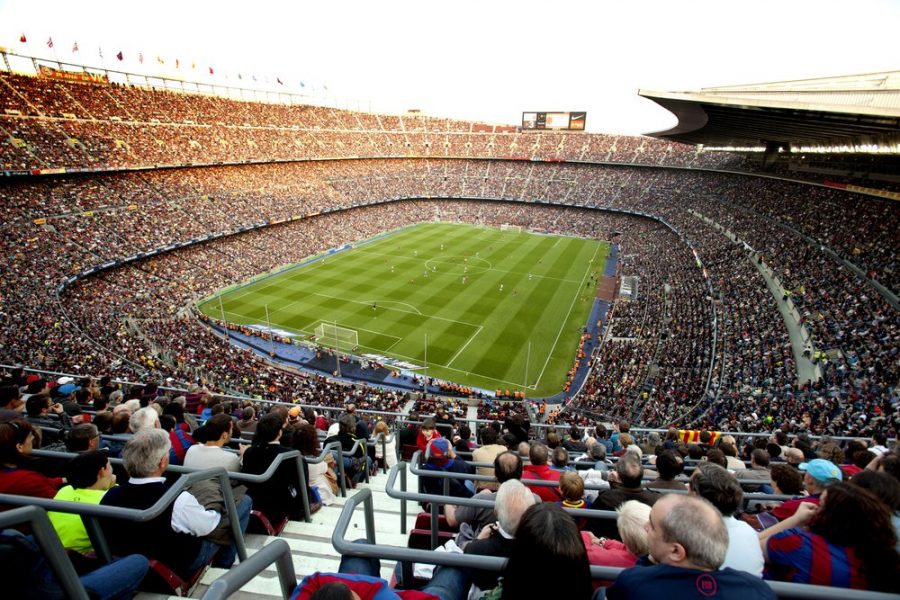Exploring Europe’s Grandest Football Stadiums

When it comes to watching a football match in Europe, the continent boasts some of the most captivating and enchanting stadiums. These venues are often steeped in history, while others offer modern amenities and comfort. In this article, we will unveil the five largest stadiums in Europe in terms of spectator capacity, presenting an overview of their unique features and remarkable experiences.
- Camp Nou: A Glimpse into its Glorious Past
Camp Nou, with its monumental capacity of 99,354, not only holds the title of Europe’s largest stadium but also encapsulates a wealth of history. FC Barcelona’s home ground, this stadium stands as a witness to legendary moments in football. Notably, it hosted the 1989 Champions Cup final, where Milan fans flocked to Barcelona to watch Sacchi’s Milan triumph with a resounding 4-0 victory over Steaua Bucharest. The stadium’s significance extended to the 1999 Champions League final, a match etched in memory as Manchester United dramatically overturned Bayern Munich with two goals in added time.
As of summer 2023, Camp Nou is undergoing renovation to enhance its capacity to accommodate 105,000 spectators. During this period, Barcelona will temporarily shift its base to the Olympic stadium in the city.
- Wembley: A Timeless Monument
With a capacity of 90,000, Wembley Stadium in London transcends time as a monumental symbol of football greatness. Initially inaugurated in 1923 and subsequently rebuilt in 2007, the stadium has witnessed England’s triumphs and disappointments.
Wembley Stadium takes pride in hosting England’s national team matches, FA Cup and League Cup finals, and various playoffs across different leagues. The pinnacle of its prestige will shine in 2024 as it prepares to welcome the Champions League final.
- Signal Iduna Park: Roar of Passionate Fans
Formerly known as Westfalenstadion and now named as Signal Iduna Park, the Dortmund stadium accommodates 81,365 spectators. Its claim to fame lies in the vibrant “yellow wall,” a spectacle that embodies Borussia Dortmund’s fervent fan base. The stadium resonates with the unified voice of supporters dressed in yellow and black, creating an unparalleled atmosphere that leaves an indelible mark on both players and spectators.
- Stade de France: Echoes of Victory
Designed for the 1998 World Cup, Stade de France’s capacity of 81,338 stands as a testament to France’s football achievements. The stadium witnessed France’s crowning glory as they secured their first World Cup victory on home soil. Although no club claims it as their home ground, the French national team graces its fields, and it serves as the arena for prestigious French Cup and League Cup finals.
- Santiago Bernabéu: Where Legends Unfold
Santiago Bernabéu, home to Real Madrid and accommodating 81,044 spectators, embodies the spirit of champions. Its formidable reputation as a fortress for the home team makes it a challenging battleground for visiting adversaries. The stadium has seen history unfold within its confines, from Italy’s 1982 World Cup victory to Milan’s triumphant European Cup conquests against Ajax and Inter’s memorable Champions League victory over Bayern Munich.
Conclusion
In the realm of European football, these grand stadiums transcend their physical structures, becoming hallowed grounds where history is written, legends are made, and unforgettable memories are born. Camp Nou, Wembley, Signal Iduna Park, Stade de France, and Santiago Bernabéu continue to stand as testaments to the passion, triumphs, and collective spirit of the beautiful game. As the fervor of the fans and the echoes of cheers fill these majestic arenas, they remind us that football is not merely a sport but an indelible part of cultural heritage.



